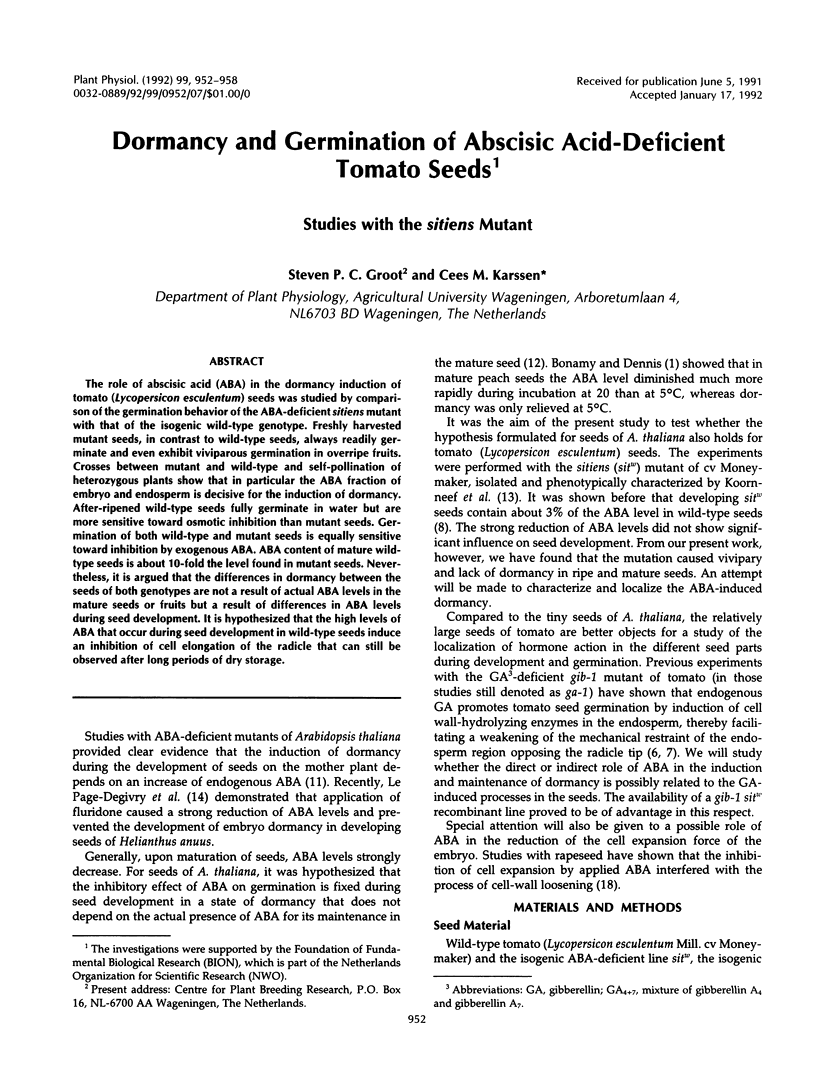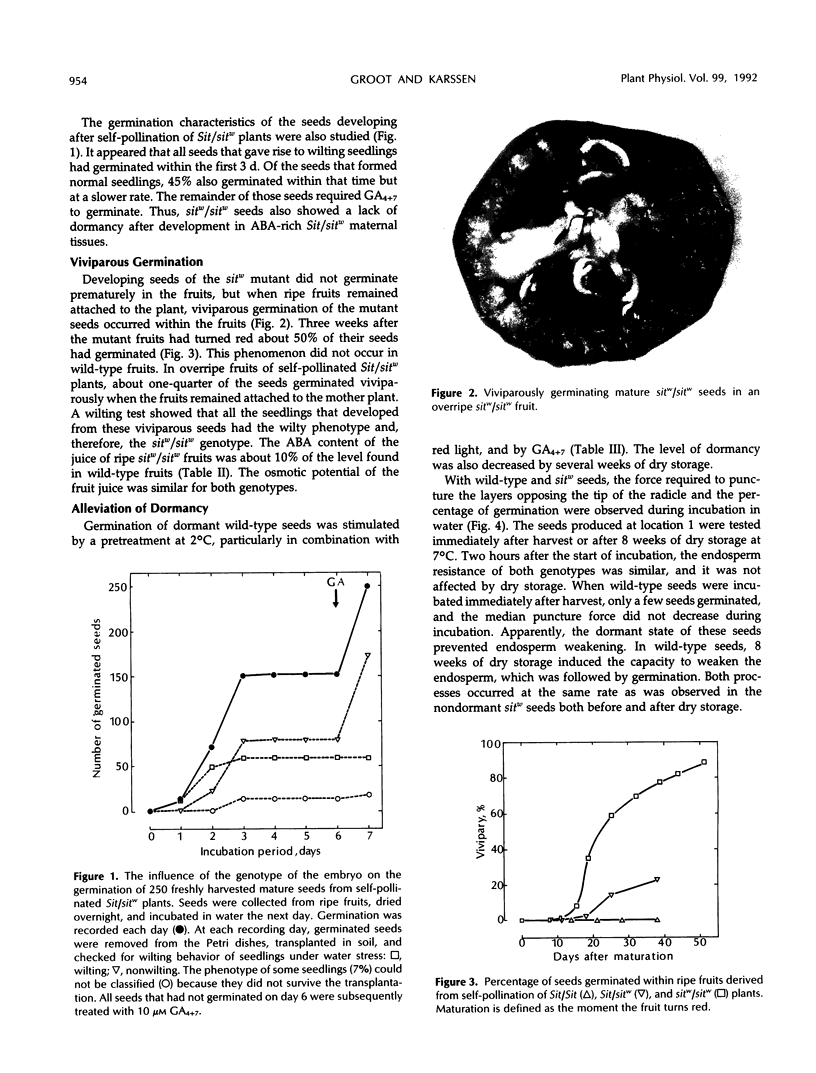Abstract
The role of abscisic acid (ABA) in the dormancy induction of tomato (Lycopersicon esculentum) seeds was studied by comparison of the germination behavior of the ABA-deficient sitiens mutant with that of the isogenic wild-type genotype. Freshly harvested mutant seeds, in contrast to wild-type seeds, always readily germinate and even exhibit viviparous germination in overripe fruits. Crosses between mutant and wild-type and self-pollination of heterozygous plants show that in particular the ABA fraction of embryo and endosperm is decisive for the induction of dormancy. After-ripened wild-type seeds fully germinate in water but are more sensitive toward osmotic inhibition than mutant seeds. Germination of both wild-type and mutant seeds is equally sensitive toward inhibition by exogenous ABA. ABA content of mature wild-type seeds is about 10-fold the level found in mutant seeds. Nevertheless, it is argued that the differences in dormancy between the seeds of both genotypes are not a result of actual ABA levels in the mature seeds or fruits but a result of differences in ABA levels during seed development. It is hypothesized that the high levels of ABA that occur during seed development in wild-type seeds induce an inhibition of cell elongation of the radicle that can still be observed after long periods of dry storage.
Full text
PDF






Images in this article
Selected References
These references are in PubMed. This may not be the complete list of references from this article.
- Cornish K., Zeevaart J. A. Phenotypic expression of wild-type tomato and three wilty mutants in relation to abscisic Acid accumulation in roots and leaflets of reciprocal grafts. Plant Physiol. 1988 May;87(1):190–194. doi: 10.1104/pp.87.1.190. [DOI] [PMC free article] [PubMed] [Google Scholar]
- Le Page-Degivry M. T., Barthe P., Garello G. Involvement of Endogenous Abscisic Acid in Onset and Release of Helianthus annuus Embryo Dormancy. Plant Physiol. 1990 Apr;92(4):1164–1168. doi: 10.1104/pp.92.4.1164. [DOI] [PMC free article] [PubMed] [Google Scholar]
- Michel B. E. Evaluation of the water potentials of solutions of polyethylene glycol 8000 both in the absence and presence of other solutes. Plant Physiol. 1983 May;72(1):66–70. doi: 10.1104/pp.72.1.66. [DOI] [PMC free article] [PubMed] [Google Scholar]
- Michel B. E., Wiggins O. K., Outlaw W. H. A Guide to Establishing Water Potential of Aqueous Two-Phase Solutions (Polyethylene Glycol plus Dextran) by Amendment with Mannitol. Plant Physiol. 1983 May;72(1):60–65. doi: 10.1104/pp.72.1.60. [DOI] [PMC free article] [PubMed] [Google Scholar]
- Ni B. R., Bradford K. J. Quantitative models characterizing seed germination responses to abscisic Acid and osmoticum. Plant Physiol. 1992 Mar;98(3):1057–1068. doi: 10.1104/pp.98.3.1057. [DOI] [PMC free article] [PubMed] [Google Scholar]
- Schopfer P., Plachy C. Control of Seed Germination by Abscisic Acid : III. Effect on Embryo Growth Potential (Minimum Turgor Pressure) and Growth Coefficient (Cell Wall Extensibility) in Brassica napus L. Plant Physiol. 1985 Mar;77(3):676–686. doi: 10.1104/pp.77.3.676. [DOI] [PMC free article] [PubMed] [Google Scholar]



